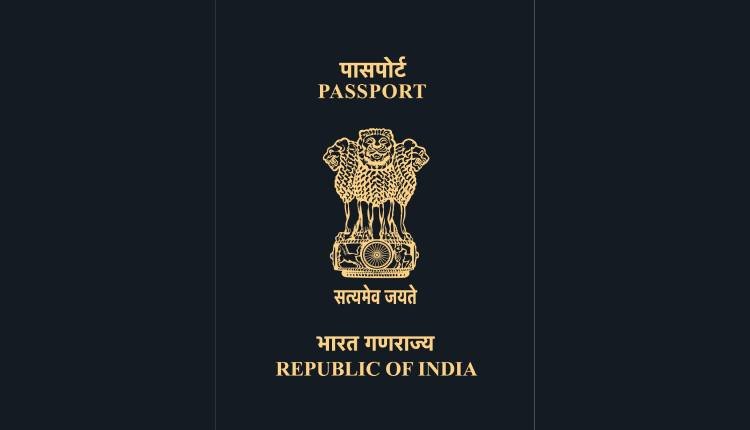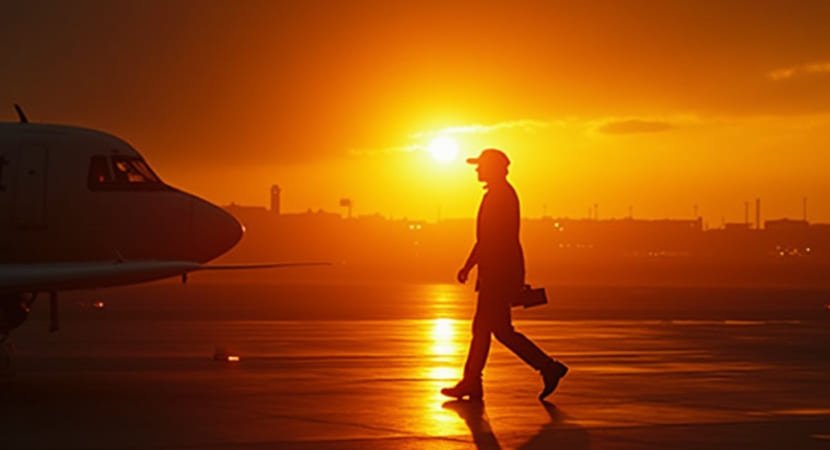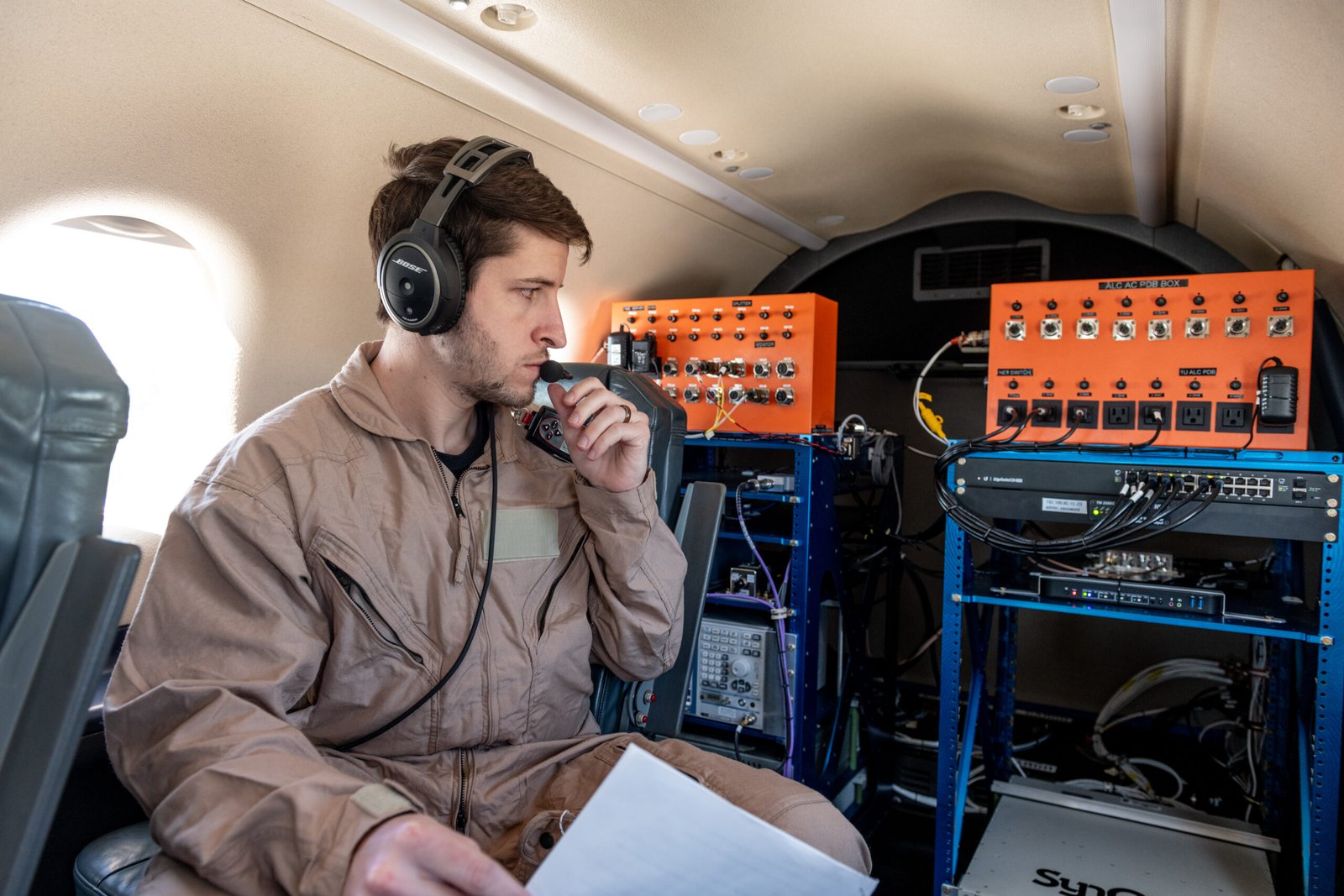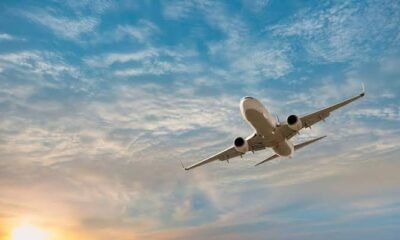Flight Buzz
India Leaps 8 Spots In Global Passport Index, Asia-Pacific Airlines See 9.5 Pc Travel Growth

New Delhi: India has made a jump of eight spots to rank 77th in the Henley Passport Index’s mid-year update.
India’s feat is impressive, as it is the biggest climb in ranking by any country in the last six months. Earlier this year, India was ranked 85th.
The UK-based Henley Passport Index is a global ranking of countries according to the travel freedom allowed by those countries’ ordinary passports for their citizens.
With the addition of two more countries to the visa-on-arrival list for Indians, the country now also has visa-free access to 59 countries.
The ranking reflects the number of destinations that passport holders can enter without a prior visa.
Malaysia, Indonesia, the Maldives, and Thailand are some countries that offer visa-free access to Indian passport holders. Countries such as Sri Lanka, Macau, Myanmar, etc., offer visa-on-arrival (VOA).
The rankings, based on data from the International Air Transport Association (IATA), show that Asian countries are on the rise in passport power, with emerging economies like India, Saudi Arabia, the UAE, and China closing in on traditional heavyweights like the US and the UK.
This trend is reflected in IATA data, as Asia-Pacific airlines led global air travel growth in the first five months of 2025 with a 9.5 per cent increase. North America experienced a flat market.
Singapore retained its position at the top of the index, with visa-free access to 193 of 227 destinations. Japan and South Korea followed closely with 190 destinations.
Seven EU countries, including France, Germany, and Italy, shared the third spot, while New Zealand joined Greece and Switzerland in fifth position.
Meanwhile, this is the first time the US fell out of the top 10 altogether.
The US and UK, once ranked first globally, continued their decline. The UK fell to sixth place with access to 186 destinations, and the US dropped to 10th with 182.
The UAE rose from 42nd to 8th in 10 years while adding more visa-free destinations than any other country. A new wave of diplomatic visa waivers helped China advance 34 positions in a decade to the 60th spot in 2025.
(IANS)
Flight Buzz
United Airlines Now Observes Wedding On A Flight From New York To Orlando, Learn What This Says About Evolving Travel Trends

Thursday, July 24, 2025
In a surprise heartwarming twist, a couple got married on board a United Airlines Internet|Entertainment Service aircraft, on it’s way from Newark (EWR) to Orlando (MCO), ushering in a new era of travel and tourism. This dare ‘wedding in the sky’ while in flight, on the couple’s way to their honeymoon, has grabbed the attention of the global travelers and aviation industry. And so Wednesday’s mile-high ceremony set a bizarre wedding bar that simultaneously turned their marriage into a personal milestone and a landmark moment in the culture of travel.
The Unexpected Ceremony: A Friendly Challenge Becomes Reality
What began as a friendly challenge between friends quickly escalated into a life-changing event. Groom Jake Meli was inspired by a friend’s cruise ship wedding and decided to elevate his own ceremony by marrying mid-air. His idea, which started as a fun concept, became a reality when he and Abigail Power decided to marry aboard the flight. The couple’s wedding onboard the United Airlines Boeing 737 was a surprise to the passengers, who had no idea that a wedding was about to take place as they boarded their flight to Florida.
The choice of flying to Orlando, one of the world’s most popular travel destinations, was fitting, as it is home to Disney World and Universal Studios, both of which offer endless attractions for couples and honeymooners. The wedding ceremony was not only a romantic gesture but a unique expression of how travel can be woven into life’s most significant moments.
Impact of the Event on Travel Trends and Destination Weddings
This mid-air wedding has shone a spotlight on a growing trend in global travel: destination weddings and unique celebratory experiences. As more couples seek novel ways to commemorate important moments, destination weddings, particularly those held in unexpected locations, are gaining popularity. While some prefer the traditional route of a beach or exotic locale, others like Jake and Abigail are embracing unconventional settings to make their wedding day truly memorable.
As the world has adapted to new norms in the wake of the COVID-19 pandemic, travelers are seeking experiences that offer both adventure and meaningful moments. This trend aligns with the growing demand for personalized and immersive travel experiences. For airlines, offering in-flight weddings or marriage services could become a unique selling point, allowing travelers to celebrate milestones in a way that has never been done before.
The Growing Trend of Unconventional Weddings in Travel
The idea of marrying in the sky is not entirely new, but Jake and Abigail’s wedding is a fresh and highly publicized example of this evolving trend. Over the past few years, unconventional wedding venues have been gaining popularity. From helicopter weddings to mountaintop ceremonies and underwater nuptials, couples are increasingly choosing to marry in places that reflect their personal interests and passions.
In-flight weddings offer a new layer of excitement for those seeking to combine travel and romance. Airlines that begin offering in-flight weddings or ceremonies could tap into a niche market of couples who are looking for something out of the ordinary. This can also lead to a boom in tourism for destinations that are easily accessible by air, making destinations like Orlando even more desirable for couples seeking a unique wedding experience.
A New Chapter in Honeymooning: Couples Celebrate Above the Clouds
After exchanging vows, the newlyweds were treated to champagne and cake while being flown over the skies of the United States on their way to their honeymoon destination in Orlando. The Boeing 737 cabin was adorned with twinkling lights, and the flight crew made an announcement over the PA system, further adding to the special moment. For many, this new form of honeymooning presents an exciting way to celebrate a life-changing event while enjoying the perks of air travel.
Airlines could also look at the potential for catering to honeymooners and couples on their journeys, offering specialized services such as wedding packages, romantic meals, or even providing a serene, quiet cabin experience for couples who want privacy during their special moment.
The Role of Airlines in Shaping Travel Celebrations
The ability of airlines to create memorable experiences for passengers has always been an important element of their service offerings. In-flight celebrations, whether for birthdays, anniversaries, or weddings, could emerge as a prominent service in the future. This wedding on a United Airlines flight is just the beginning of what could become a popular service for couples looking to celebrate their love in a once-in-a-lifetime way.
Airlines may eventually partner with wedding planners and destination providers to offer comprehensive wedding and honeymoon packages that cater to the desires of travelers who want something extraordinary. For example, it’s possible that couples might soon be able to book an entire in-flight wedding experience, complete with decorations, wedding planners, and special guest accommodations.
The Bigger Picture: How This Impacts the Tourism Industry
The rise of unconventional wedding and travel experiences could have far-reaching effects on the tourism and travel industries. As people seek unique ways to mark significant life events, destinations known for adventure, romance, and luxury could see a surge in popularity. Locations that are easily accessible by air, especially those with beautiful landscapes or iconic landmarks, could capitalize on the growing trend of destination weddings.
The mid-air wedding of Jake Meli and Abigail Power also highlights how airlines can innovate within their services to offer more than just transportation. By incorporating celebratory experiences into their itineraries, airlines could attract a new demographic of travelers looking to combine travel with meaningful milestones. Additionally, this could lead to the development of new packages and offers designed to cater to couples, making wedding travel a lucrative market for the airline industry.
Conclusion: The Future of Weddings in the Sky
The United Airlines flight from Newark to Orlando on which the wedding took place demonstrates how the change in travel is more and more not so much about where you are going, but what you are doing. There’s no longer such a thing as weddings and other big life events stuck in traditional venues. This in-air marriage sets a standard as to what this booming niche in travel and tourism may be in the future. With a world of travel opportunities at its disposal, so should the wishlist of the modern day travelers, who dream from their everyday realities, of adventures, celebrations and life-changing moments. Airlines, destinations, and the travel sector as a whole stand to benefit from these trends, and the opportunities to create special travel experiences are limitless.
Tags: Airline Celebrations, destination weddings, florida, Flying Wedding, global travel, honeymoon, Mid-Air Wedding, New York, newark, Orlando, travel trends, US, US Travel News
Flight Buzz
Brazilian civil aviation serves increasing number of passengers — MercoPress

Brazilian civil aviation serves increasing number of passengers
If we maintain this pace in the second half of the year, we will close 2025 with the best result in history, Minister Silvio Costa Filho said
Brazil’s commercial aviation sector experienced a record-breaking first half of 2025, transporting 61.8 million passengers on domestic and international flights. This represents a 10% increase compared to the same period in 2024, the Ministry of Ports and Airports said this week in a document based on the Demand and Supply Report from the National Civil Aviation Agency (Anac).
The growth was fueled by both international and domestic travel, with international flights seeing a 15.3% rise (13.8 million passengers) and domestic flights increasing by 8.6% (over 40 million passengers).
Several major airports contributed significantly to this surge. Rio de Janeiro’s Antonio Carlos Jobim International Airport (Galeão) showed the highest growth, with a 26% increase to 8.2 million passengers. Guarulhos Airport in São Paulo, the largest in the country, served nearly 22 million travelers, an 8% increase. Other notable airports with significant growth include Confins International Airport in Belo Horizonte (almost 15% increase) and Brasília Airport (7.6% increase).
The Ministry of Ports and Airports attributes this success to government investments in airport infrastructure, support for airlines, and appreciation of aviation workers, anticipating continued positive trends for the remainder of the year.
We are experiencing the best period in our civil aviation history, and the numbers prove it. If we maintain this pace in the second half of the year, we will close 2025 with the best result in history, Minister Silvio Costa Filho said in a statement.
We have a positive scenario with good prospects for the coming months. The investments that the federal government has been making in civil aviation, with improvements in airport infrastructure, institutional support for airlines, and also the valorization of aviation workers, have had a significant effect at the end of the chain, allowing more Brazilians to travel, use air transport, and contribute to the country’s development, the Ministry’s Director of Concessions and Regulatory Policies Daniel Longo also noted.
Flight Buzz
NASA Tests 5G-Based Aviation Network to Boost Air Taxi Connectivity

NASA engineers are exploring how the technology used in existing cellphone networks could support the next generation of aviation.
In April and May, researchers at NASA’s Glenn Research Center in Cleveland built two specialized radio systems to study how well fifth-generation cellular network technology, known as 5G, can handle the demands of air taxi communications.
“The goal of this research is to understand how wireless cellphone networks could be leveraged by the aviation industry to enable new frontiers of aviation operations,” said Casey Bakula, lead researcher for the project, who is based at Glenn. “The findings of this work could serve as a blueprint for future aviation communication network providers, like satellite navigation providers and telecommunications companies, and help guide the Federal Aviation Administration’s plan for future advanced air mobility network requirements in cities.”
Instead of developing entirely new standards for air taxi communications, NASA is looking to see if the aviation industry could leverage the expertise, experience, and investments made by the cellular industry towards the development of reliable, secure, and scalable aviation networks. If 5G networks could provide an “80% solution” to the challenge, researchers can focus on identifying the remaining 20% that would need to be adapted to meet the needs of the air taxi industry.
5G networks can manage a lot of data at once and have very low signal transmission delay compared to satellite systems, which could make them ideal for providing location data between aircraft in busy city skies. Ground antennas and networks in cities can help air taxis stay connected as they fly over buildings, making urban flights safer.
To conduct their tests, NASA researchers set up a system that meets current 5G standards and would allow for future improvements in performance. They placed one radio in the agency’s Pilatus PC-12 aircraft and set up another radio on the roof of Glenn’s Aerospace Communications Facility building. With an experimental license from the Federal Aviation Administration (FAA) to conduct flights, the team tested signal transmissions using a radio frequency band the Federal Communications Commission dedicated for the safe testing of drones and other uncrewed aircraft systems.
During testing, NASA’s PC-12 flew various flight patterns near Glenn. The team used some of the flight patterns to measure how the signal could weaken as the aircraft moved away from the ground station. Other patterns focused on identifying areas where nearby buildings might block signals, potentially causing interference or dead zones. The team also studied how the aircraft’s angle and position relative to the ground station affected the quality of the connection.
These initial tests provided the NASA team an opportunity to integrate its new C-Band radio testbed onto the aircraft, verify its basic functionality, and the operation of the corresponding ground station, as well as refine the team’s test procedures. The successful completion of these activities allows the team to begin research on how 5G standards and technologies could be utilized in existing aviation bands to provide air-to-ground and aircraft-to-aircraft communications services.
In addition to meeting these initial test objectives, the team also recorded and verified the presence of propeller modulation. This is a form of signal degradation caused by the propeller blades of the aircraft partially blocking radio signals as they rotate. The effect becomes more significant as aircraft fly at the lower altitudes air taxis are expected to operate. The airframe configuration and number of propellers on some of the new air taxi models may cause increased propeller modulation effects, so NASA researchers will study this further.
NASA research will provide baseline performance data that the agency will share with the FAA and the advanced air mobility sector of the aviation industry, which explores new air transportation options. Future research looking into cellular network usage will focus on issues such as maximum data speeds, signal-to-noise ratios, and synchronization between aircraft and ground systems. Researchers will be able to use NASA’s baseline data to measure the potential of new changes or features to communications systems.
Future aircraft will need to carry essential communications systems for command and control, passenger safety, and coordination with other aircraft to avoid collisions. Reliable wireless networks offer the possibility for safe operations of air taxis, particular in cities and other crowded areas.
This work is led by NASAs Air Mobility Pathfinders project under the Airspace Operations and Safety Program in support of NASA’s Advanced Air Mobility mission.
-

 Brand Stories2 days ago
Brand Stories2 days agoBloom Hotels: A Modern Vision of Hospitality Redefining Travel
-

 Brand Stories2 days ago
Brand Stories2 days agoOlive Living: India’s Intelligent, Community-Centric Hospitality Powerhouse
-

 Destinations & Things To Do3 days ago
Destinations & Things To Do3 days agoUntouched Destinations: Stunning Hidden Gems You Must Visit
-

 AI in Travel3 days ago
AI in Travel3 days agoAI Travel Revolution: Must-Have Guide to the Best Experience
-

 Brand Stories3 weeks ago
Brand Stories3 weeks agoVoice AI Startup ElevenLabs Plans to Add Hubs Around the World
-

 Brand Stories2 weeks ago
Brand Stories2 weeks agoHow Elon Musk’s rogue Grok chatbot became a cautionary AI tale
-

 Asia Travel Pulse3 weeks ago
Asia Travel Pulse3 weeks agoLooking For Adventure In Asia? Here Are 7 Epic Destinations You Need To Experience At Least Once – Zee News
-

 AI in Travel3 weeks ago
AI in Travel3 weeks ago‘Will AI take my job?’ A trip to a Beijing fortune-telling bar to see what lies ahead | China
-

 Brand Stories3 weeks ago
Brand Stories3 weeks agoChatGPT — the last of the great romantics
-

 Brand Stories2 weeks ago
Brand Stories2 weeks agoHumans must remain at the heart of the AI story













You must be logged in to post a comment Login